- Learning time
- 60 minutes
- First play time
- 120 minutes
Coimbra
Designed by: Flaminia Brasini,Virginio Gigli
In Coimbra you travel back 500 years to the hustling, titular city of Portugal, and take on the role of an established family – gathering influence in the town itself, visiting local monasteries and funding voyages.
How all this political manoeuvring manifests itself is a mix of cards, and dice. In each of the games’ four rounds, dice are rolled and then chosen by the players one at a time. The dice allow you to purchase cards from a display – the cost paid in one of the games’ two currencies: cash, or guards – and a higher die means you get more choice. The catch is the higher die also means a higher price, as the pips on the dice define how much cash or guards you’ll pay. When all dice have been chosen (and placed in holders to show who they belong to) the purchasing takes place, and the cards are activated: all of them will push your markers up one of the income tracks (cash, guards, points, movement) and they’ll also give you another benefit of some kind too – either an instant reward, an ongoing benefit or a way to score points.
Then the dice themselves are re-evaluated based not on their value, but their colour: whichever coloured dice you have will trigger the rewards on the matching-coloured income tracks, gathering you the aforementioned cash, guards, points, or movement.
The movement is an allowance for your Pilgrim piece to travel Portugal visiting monasteries; every one they visit gives you a reward of some kind, although each monastery can only be triggered once per player.
At the end of each round each player can pay cash (or guards!) to invest in voyages, which will score you points at the end of the game. What else scores you points? Well, the four income tracks will, some cards will, and points will also be scored for diplomas: these pop up on some cards and can be quite valuable if you collect one of each colour. Most points after the fourth and final round – is the winner!
The guru's verdict
-
Take That!
Take That!
Very little. One or two cards target other players, but in not-hugely-debilitating ways. The biggest interactive parts of Coimbra are other players taking cards you really, really wanted.
-
Fidget Factor!
Fidget Factor!
There can be lulls whilst Plan B's are concocted at short notice (see above) or Plan A's cooked up when the cards are first dealt. But for 2 or 3 players especially it can be a fairly fast-moving game...
-
Brain Burn!
Brain Burn!
...once you've wrapped your head around the multiple effects of each die and each card. When you're familiar with it Coimbra's at-first bedazzling array of effects gets less bamboozling, and it's all about turning cards and dice into points.
-
Again Again!
Again Again!
Cards and dice manifest in a variety of ways, but there are also different strategic paths here too - go heavy on cash and guards for lots of disposable income and first choice on the cards? Or play more frugally and try to eke out a high score in clever, reactive ways?

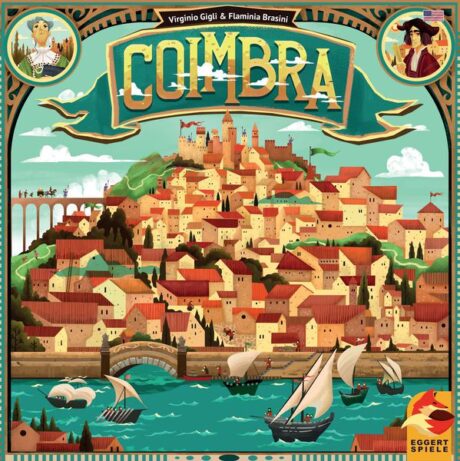

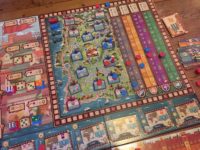
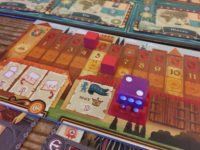

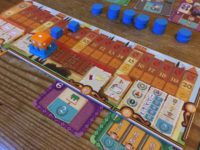



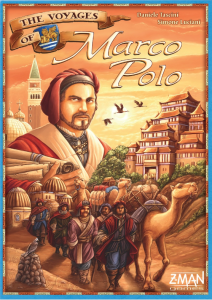


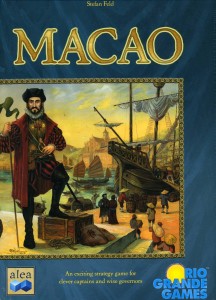
Sam says
I do like Coimbra a fair bit. One thing board games haven't lacked over the last ten years is slightly-hazy themes based around influence-getting in the middle ages, so as a veteran of many such games I could have found Coimbra a bit more-of-the-same. But it's so neatly-constructed (mechanically) and presented (asethetically) that I can forgive the opaque nature and just allow the fun of the game to come through; no, it's not laugh-a-minute family fare, but for a puzzle where your challenge is to best assemble these moving parts into a winning machine - and have only twelve actions the whole game to do it in! - it compares favourably to many. Not one I canvass to play, but I'm happy to do so at someone else's behest.